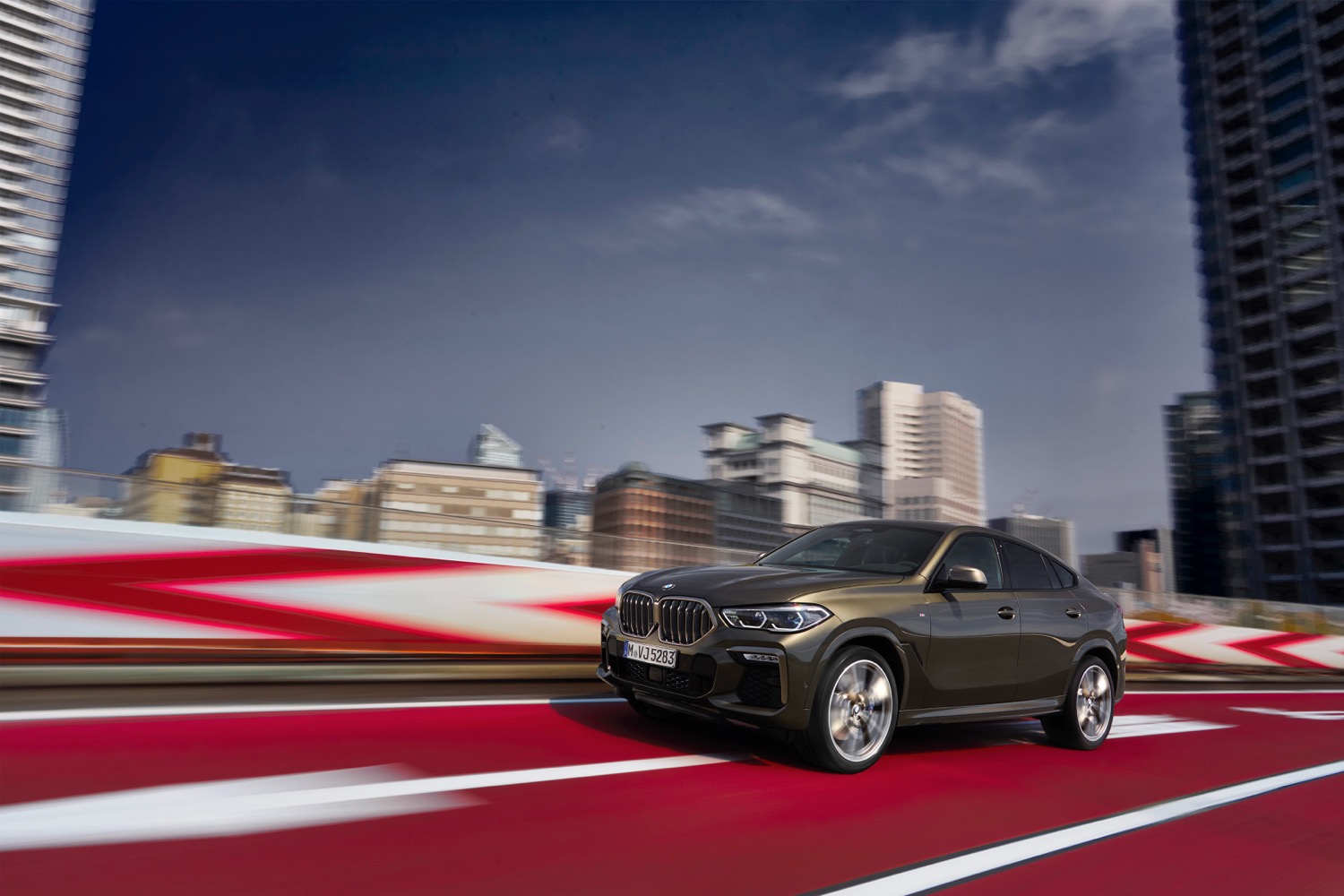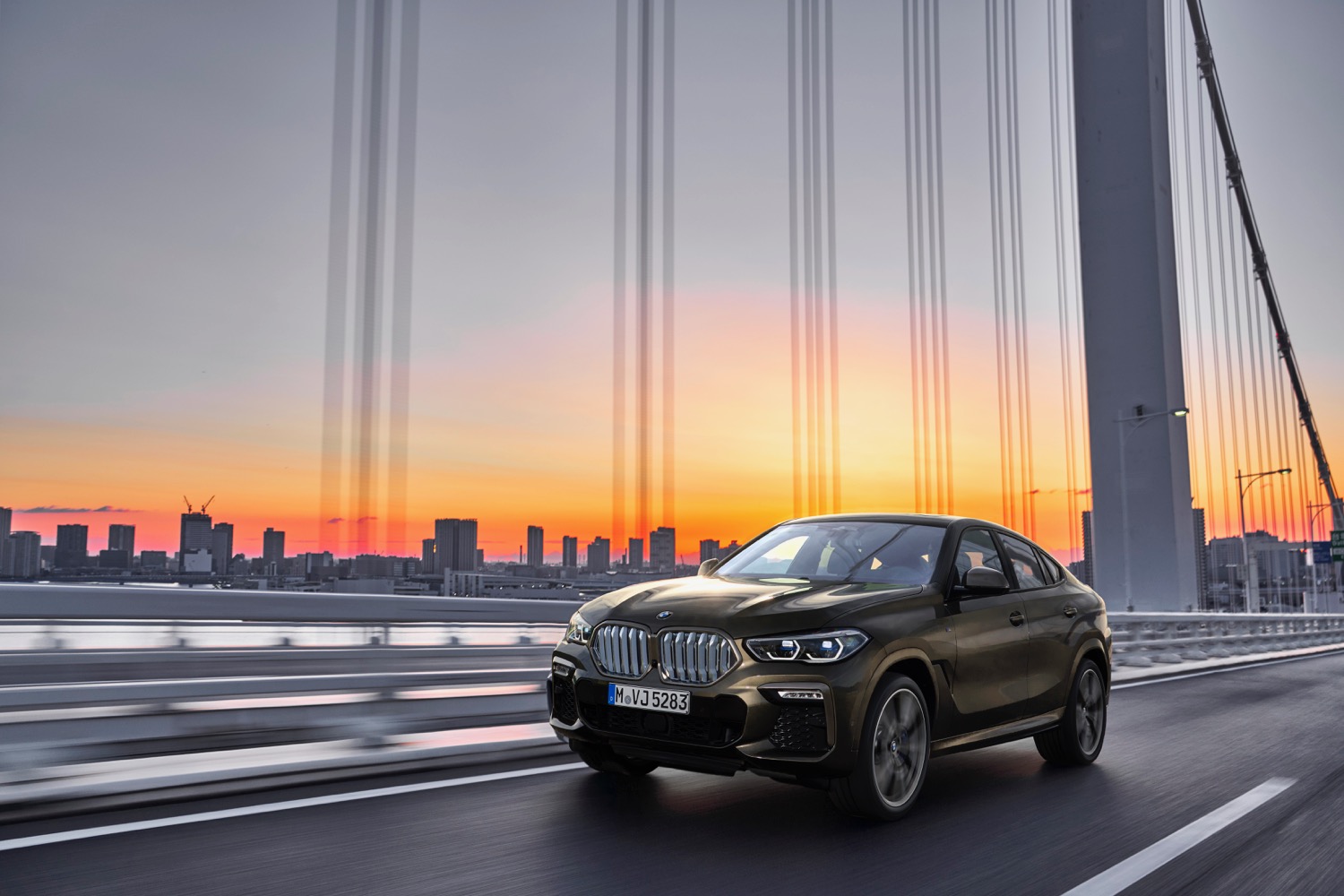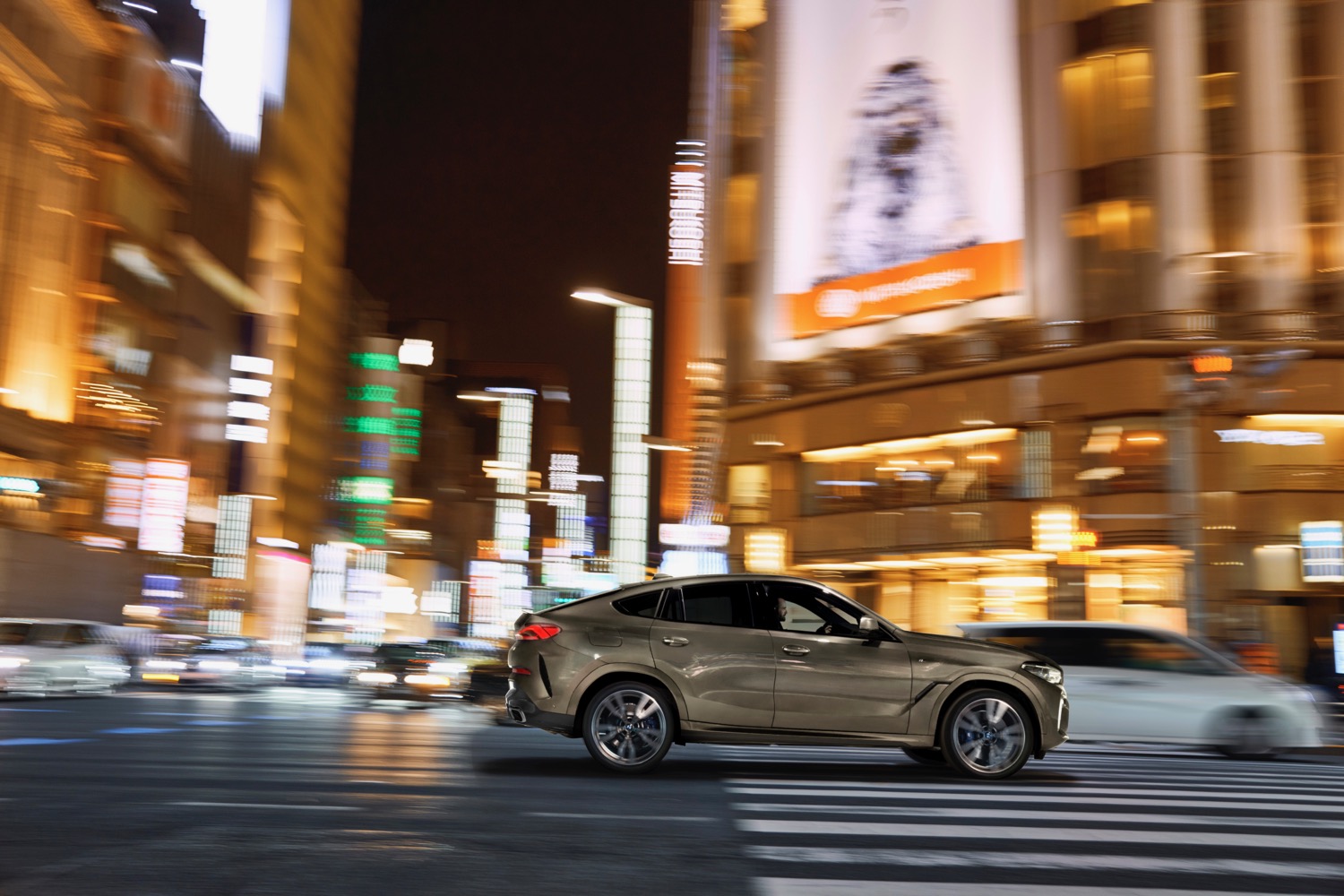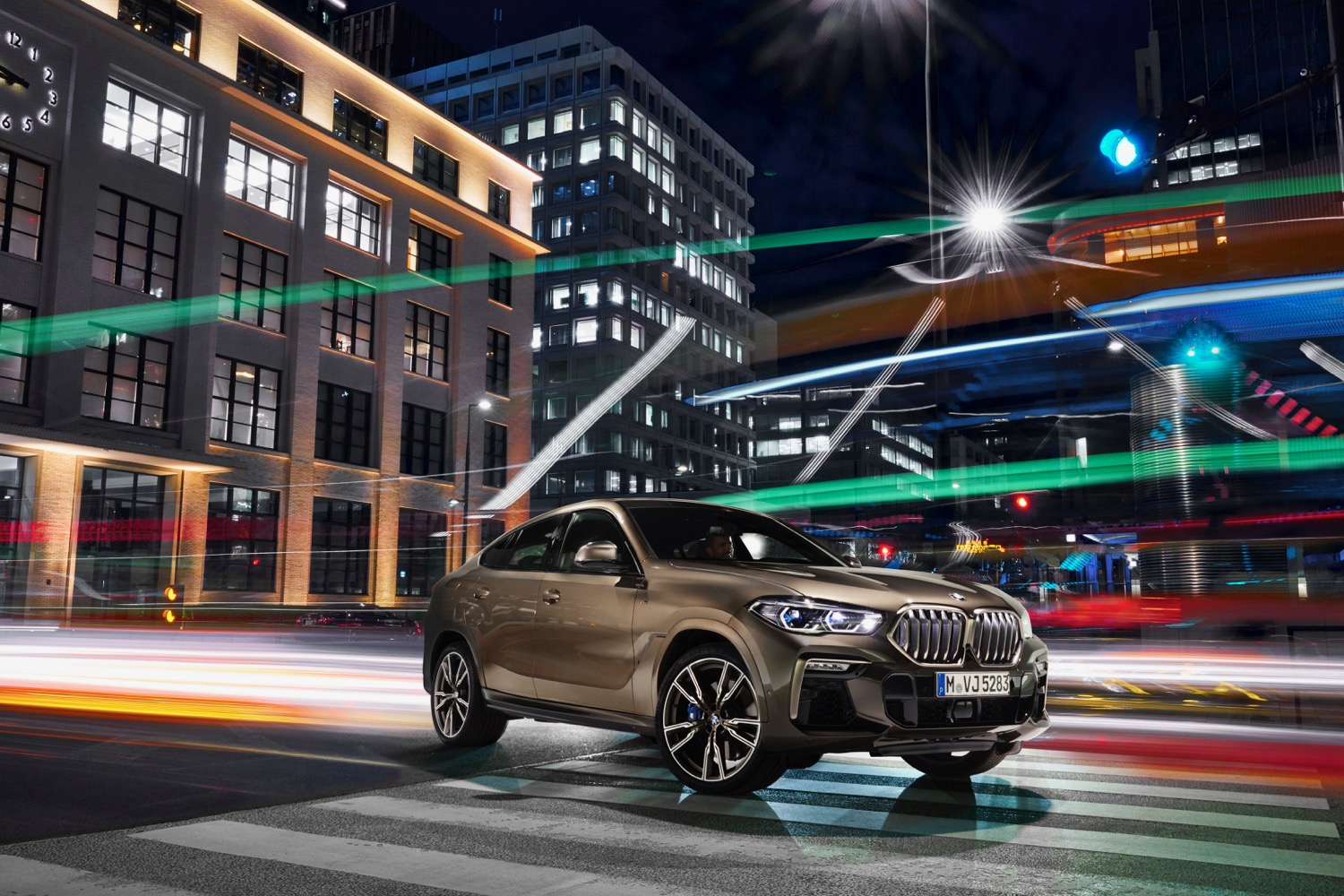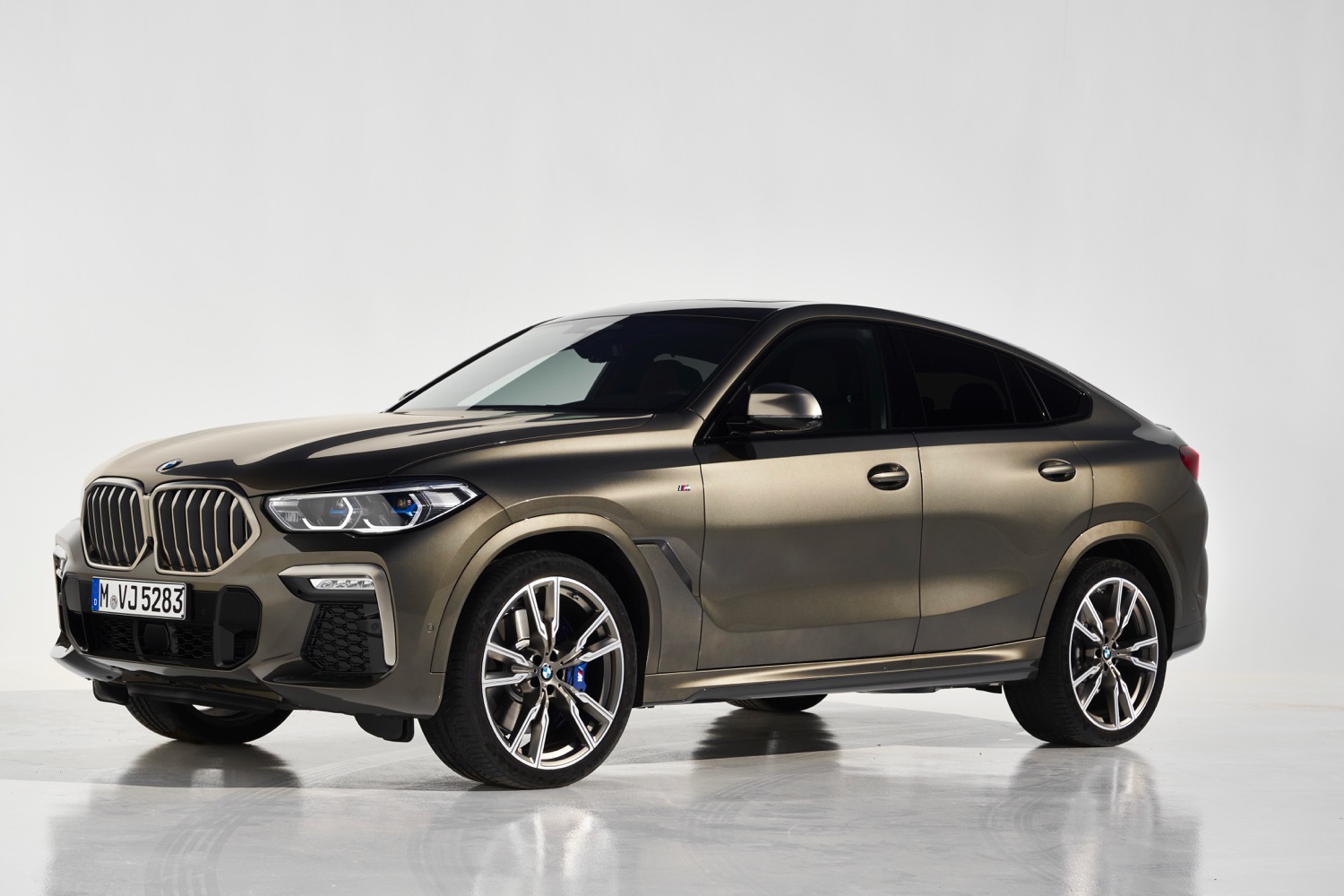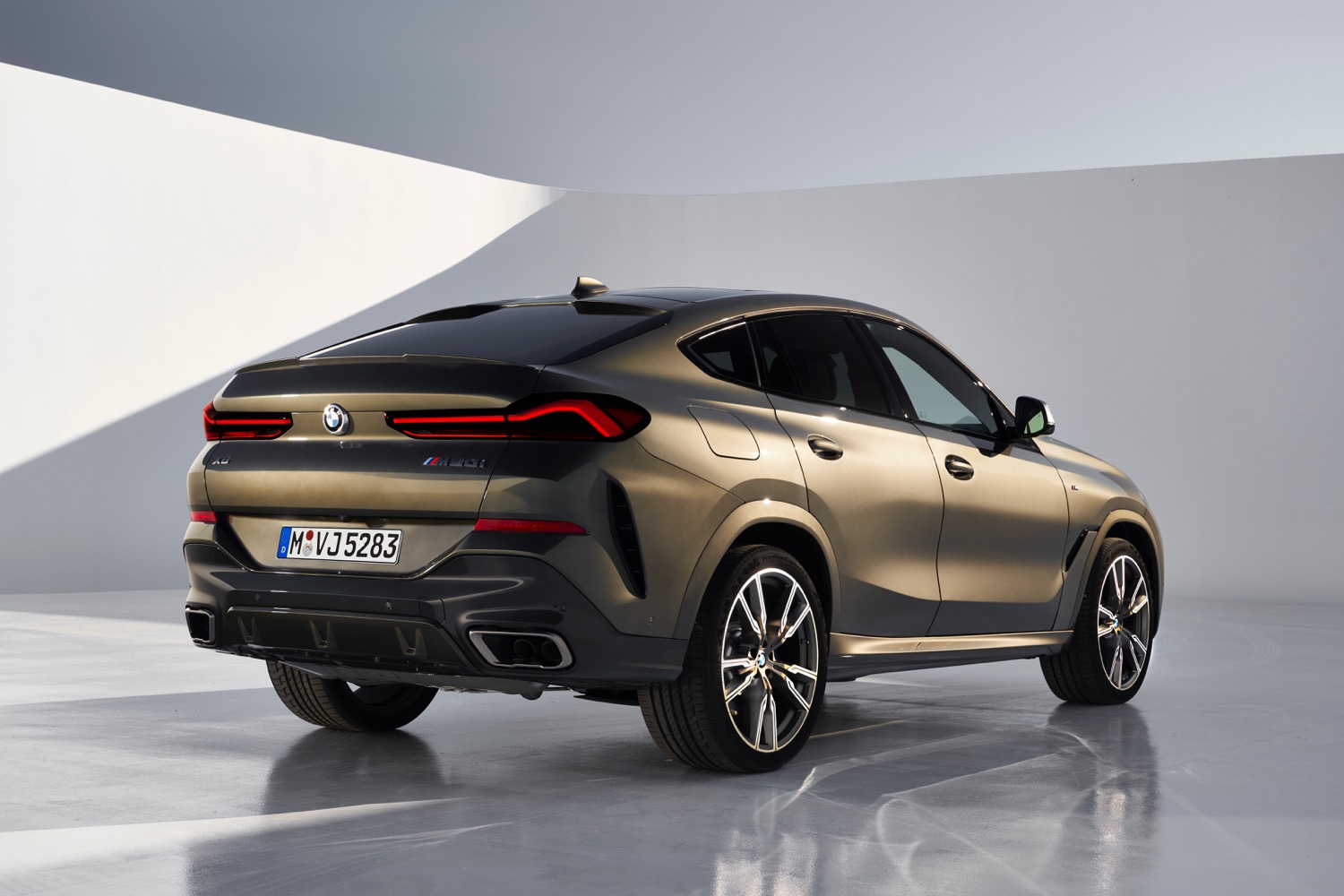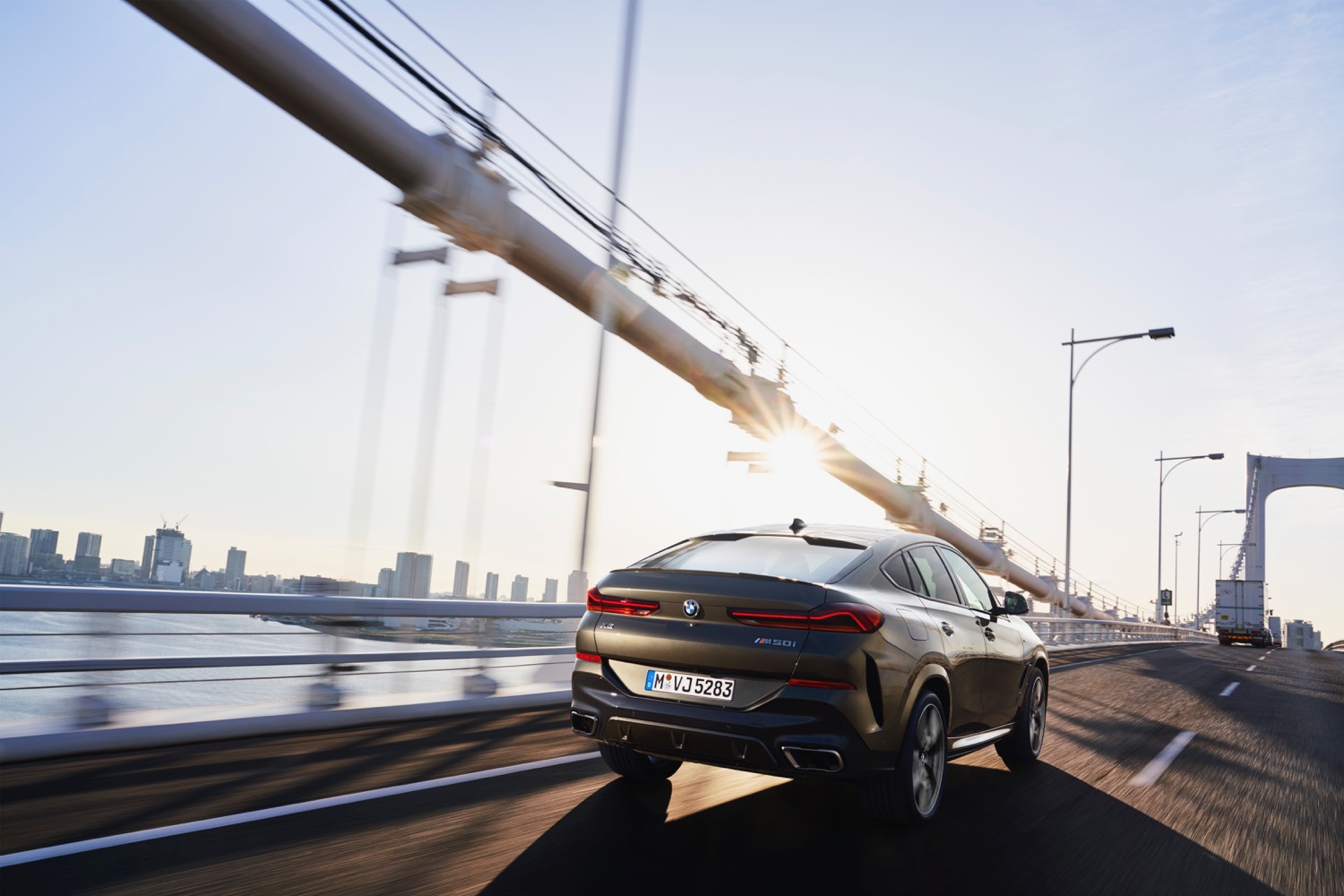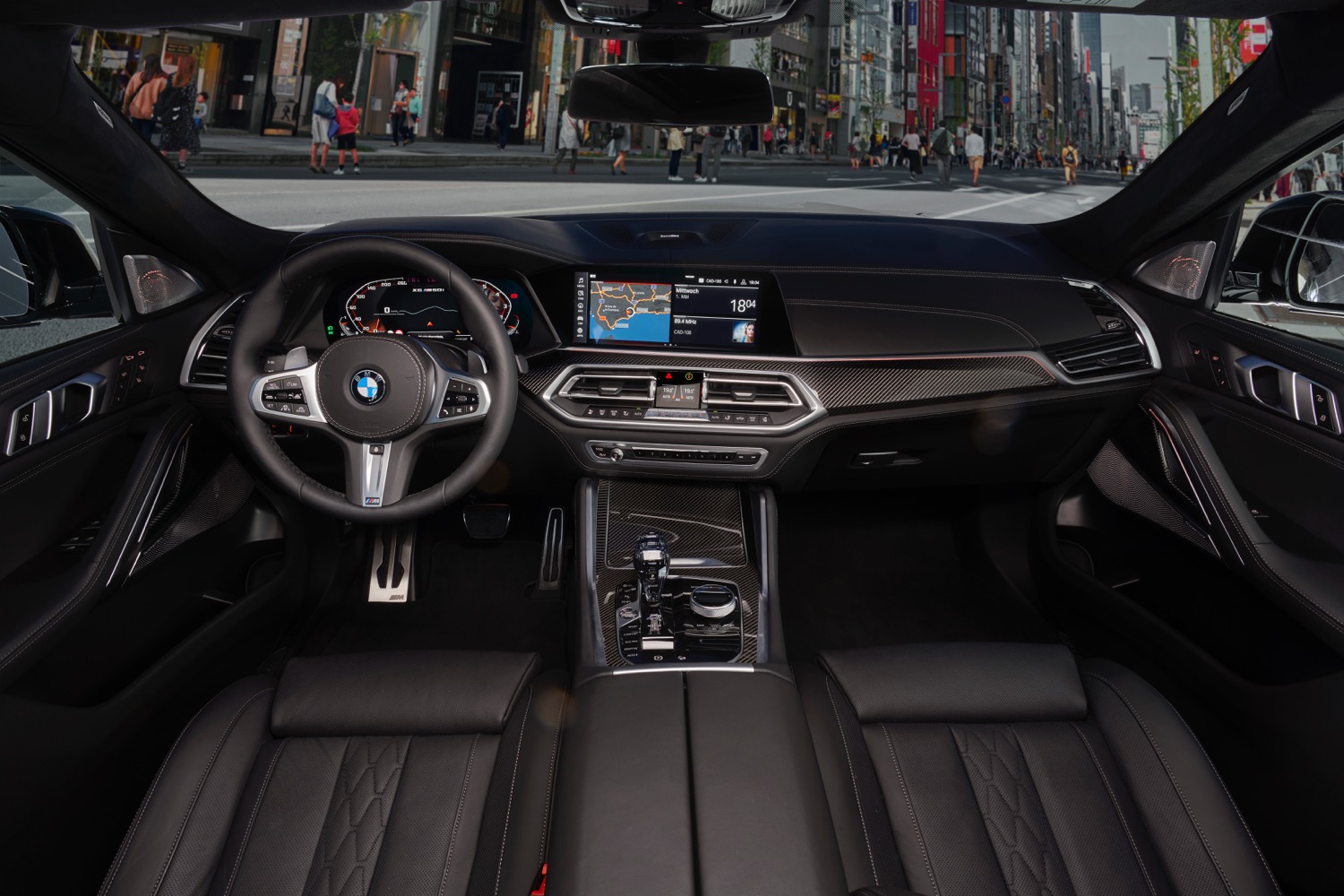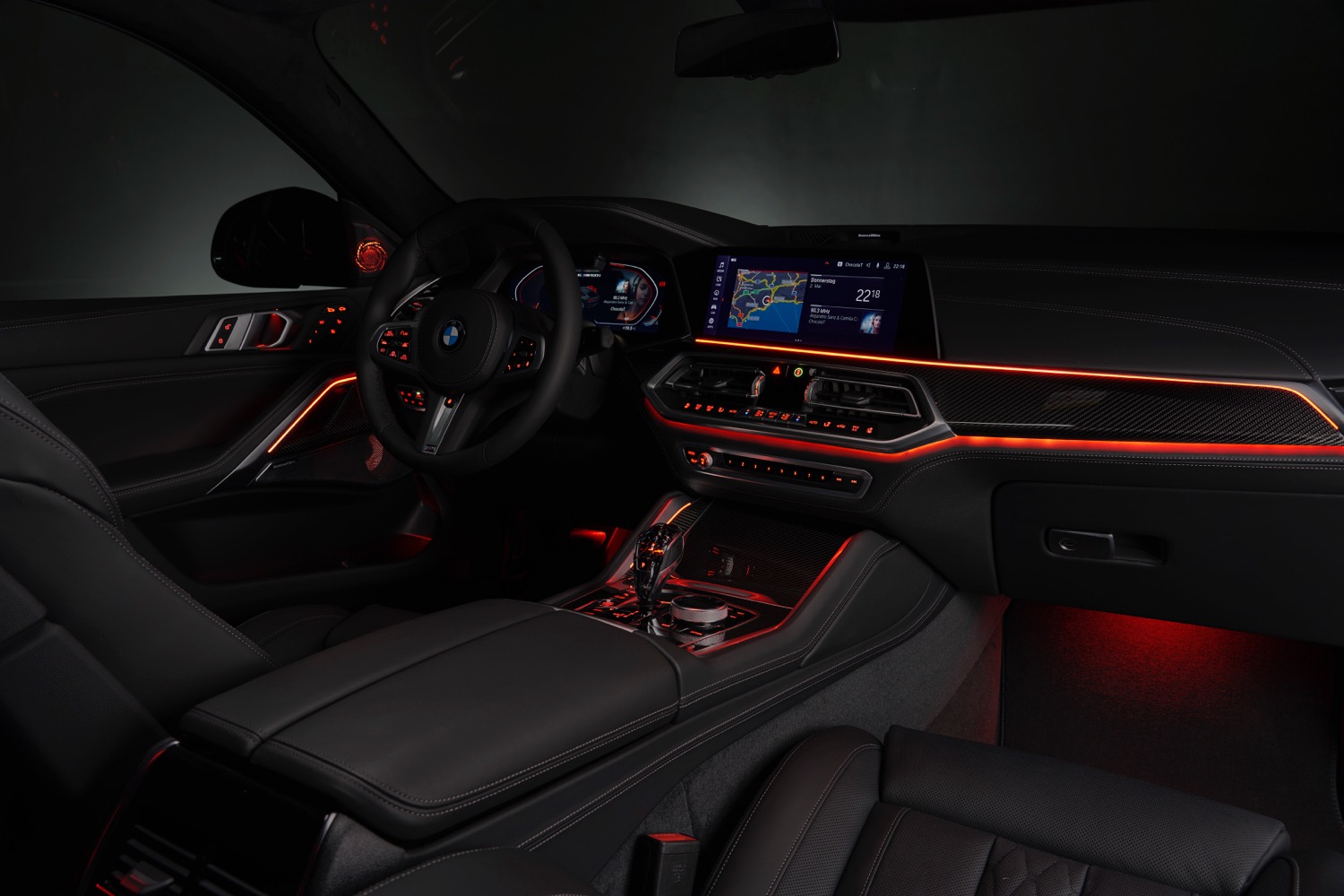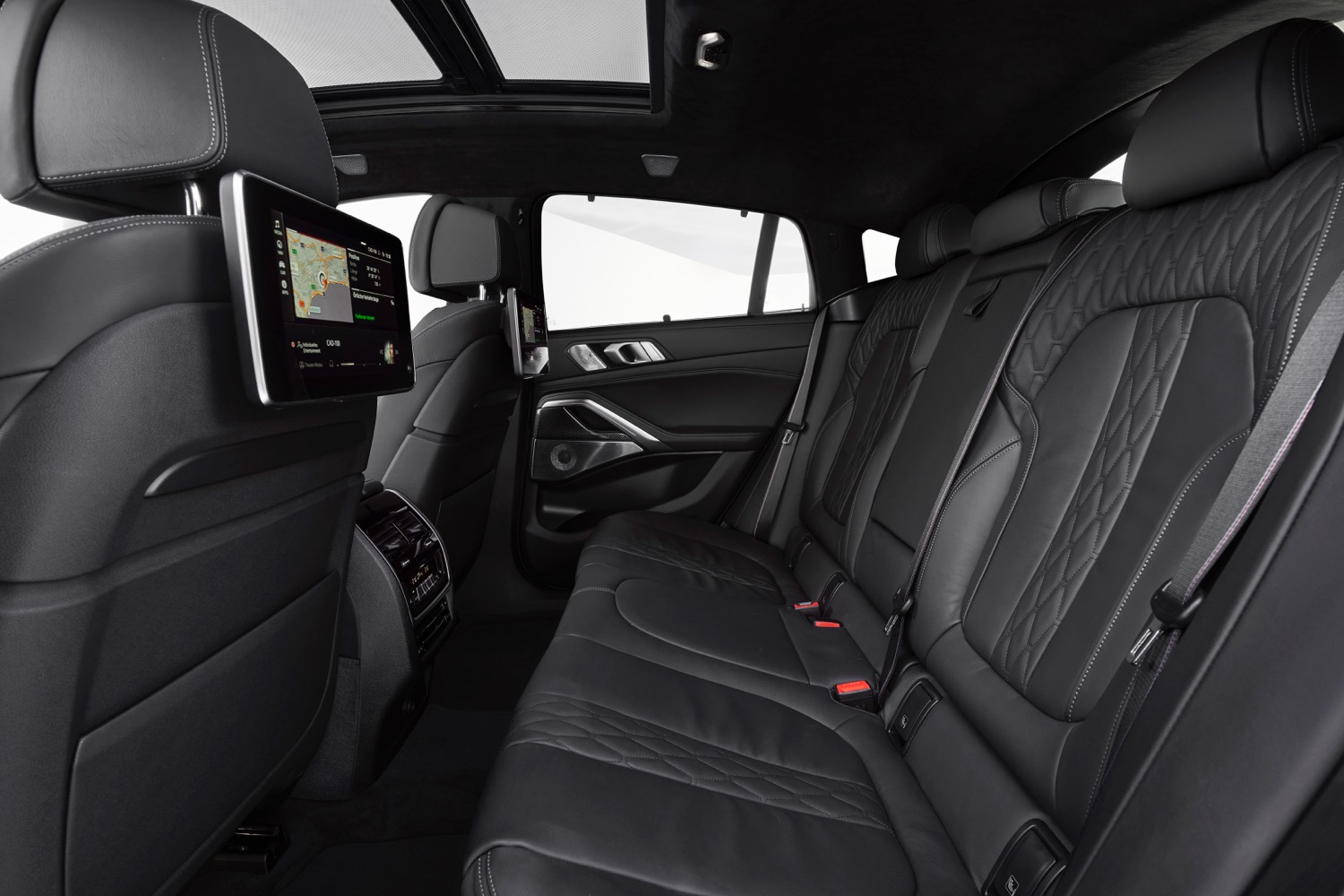More than a decade ago, BMW decided to try combining the styling of a coupe with the high-riding chassis of an SUV. The result was the BMW X6, which featured a low roofline that gave it a distinct look at the expense of passenger and cargo space. Removing the utility from a sport utility vehicle might seem like a silly idea, but customers loved the X6. It spawned an entire class of vehicles that now includes the smaller BMW X4 and a handful of imitators. So can the redesigned 2020 BMW X6 prove that the original is still the best?
As with the previous two generations, the 2020 BMW X6 is an X5 with a squashed roof. BMW seems to have made more of an effort to blend the rest of the exterior with the altered roof this time around, though. The 2020 X6 has a more muscular overall appearance than its predecessors, with more distinctive rear-end styling The new model is slightly longer and wider than the outgoing version, with a longer wheelbase, but also lower to the ground.
At launch, the 2020 BMW X6 will be available with two engine options. The base 3.0-liter twin-turbocharged inline-six produces 335 horsepower and 330 pound-feet of torque — increases of 33 hp and 35 lb.-ft. over the previous-generation six-cylinder X6, according to BMW. An eight-speed automatic is the only available transmission, but buyers can choose between rear-wheel drive and all-wheel drive. BMW expects the rear-wheel drive X6 sDrive40i model to do 0 to 60 mph in 5.2 seconds, while the all-wheel drive xDrive40i is 0.1 second slower. Both models are electronically limited to 130 mph, or 155 mph with optional performance tires.
The X6 M50i model gets a 4.4-liter twin-turbocharged V8, producing 523 hp and 553 lb.-ft. Those are increases of 78 hp and 74 lb.-ft. over the equivalent previous-generation model, according to BMW. Like the six-cylinder models, the M50i is available only with an eight-speed automatic. All-wheel drive is mandatory as well. The M50i will do 0 to 60 mph in 4.1 seconds, with the same top-speed limitations as the six-cylinder models, according to BMW. That makes the M50i the quickest X6 variant, until the inevitable X6 M model arrives.
The X6 is a big, heavy vehicle, but it can be equipped with a variety of tech features to help it handle twisty roads. It gets standard Dynamic Damper Control adaptive suspension, and a self-leveling air suspension system will be available as an option. The optional Dynamic Handling Package adds Active Roll Stabilization, which uses electric motors to compensate for body roll, and all-wheel steering. The X6 xDrive40i model can also be equipped with an off-road package, which adds driving modes for snow, sand, gravel, or rocks.
For less extreme driving conditions, the X6 also gets the Backup Assistant feature previously seen on the X7. It can remember the path the X6 has taken for up to 50 yards, and automatically retrace it. The X6 also gets adaptive cruise control that works up to 130 mph, and can automatically set off from a stop after the car has been stationary for up to 30 seconds. BMW’s latest iDrive infotainment system pairs a 12.3-inch central display screen with a 12.3-inch digital instrument cluster, all controllable using a combination of analog buttons, voice control, and gesture controls.
Production of the 2020 BMW X6 begins in Spartanburg, South Carolina, this August, but the SUV won’t be in showrooms until November. Pricing starts at $65,295 for the base X6 sDrive40i, while the xDrive40i and M50i models start at $67,595 and $86,645, respectively. All prices include a mandatory $995 destination charge.
